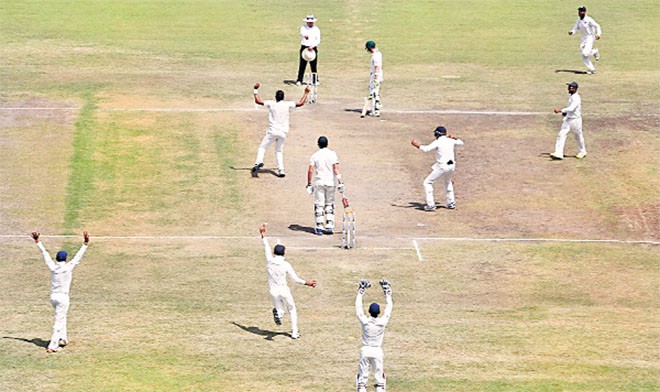
The world cricket authorities must introduce changes to Test cricket and make it meaningful. What purpose did this third Test serve to the Australian and Indian teams and the people?

As many as 447 overs were bowled during the third Test between Australia and India at Ranchi. But the match ended in a draw. Only 25 wickets fell in the entire match.
In their first innings, Australia played more than 137 overs. Their run rate was 3.28. Then, India, in order to gain a sizeable lead, declared only after they had played 210 overs. Their run-rate was lower than the visitors, only 2.87. Cheteshwar Pujara, who is being hailed as a hero, played 525 balls for his 202 runs.
Then the Australians, trying to avoid being bowled out on the fifth day and losing the match, played even more slowly, at 2.04 runs per over.
Was this fair to the spectators at the stadium and those watching the proceedings on TV? Was it worth the money and the time they spent on watching this match?
The world cricket authorities must introduce changes to Test cricket and make it meaningful. What purpose did this third Test serve to the two teams and the people?
In my view, the most practicable way is to limit the first innings of both teams. There would have been a result of the match in Ranchi had there been such a limit.
Ordinarily, 90 overs are bowled on a day in a Test. So there are around 450 overs in a Test, if there is no interruption from the heavens. If the first innings are limited to 100 or even 110 overs, there will be much fewer matches like this one. The first innings of both teams will finish around lunch on the third day. There will be more than two and a half days left for the last two innings.
The captains will have to be aggressive. The batsmen will have to score fast, at least in the first innings. Test matches will become a lot more absorbing. A large number of people who have stopped following Test cricket will resume watching it.
And Test cricket can become even more exciting if a series result is decided on the basis of points gathered through first innings lead as has been recently proposed. But if this step is enforced without enforcing a first innings limit, the matches will become even duller because both teams will be less inclined to declare. They will want to bat on and on and on in order not to concede lead. This step can work only in conjunction with a first innings limit.
There will be fewer double hundreds and possibly no triple hundreds if these rules are enforced, but matches and series will be result-oriented and meaningful.